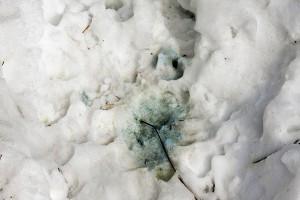
Least chipmunk (Neotamias minimus) is the most widespread and also the smallest of the North American chipmunks. In Canada it occurs from Ontario to Yukon Territory. In the United States it occurs west of the Great Plains and in the upper Great Lakes region. In Minnesota it occurs in the Arrowhead and north-central regions. It is found at the edges and in the openings, clearcuts, and disturbed areas of coniferous and mixed forests. It eats seeds, nuts, fruits, acorns, snails, insect eggs and larvae, and small birds and mammals. It nests under stumps, logs, and rocks. It winters in a burrow it digs that reaches up to one meter underground. When running it holds its tail erect.
The adult is 7¼″ to 8¾″ long. It weighs about half as much as an eastern chipmunk. The coat (pelage) on the sides is reddish-brown in the front, grayish brown in the rear. The rump is grayish-brown. There are five dark brown or black stripes on the back separated by white or cream-colored stripes. The middle stripe stretches from the nape of the neck to the base of the tail. On each side of the face there are three dark brown stripes separated by two white or cream-colored stripes. The facial stripes are well defined and highly visible. The tail is orangish-brown, and bushy.







